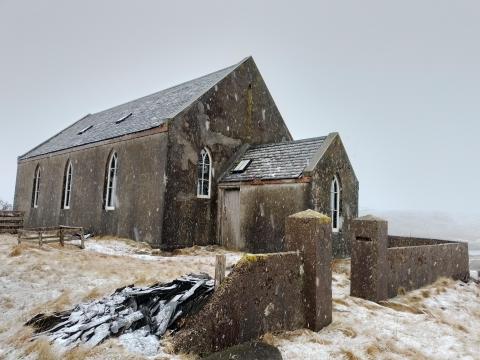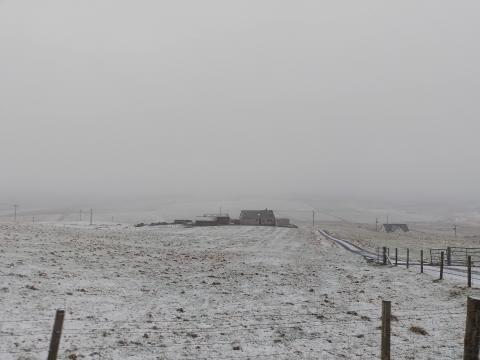Clousta Kirk's Pointed Windows

KP and I called at the remote hamlet of Clousta on Shetland’s west coast, hoping to see the old kirk. It neighbours the former manse, which is now a successful guesthouse, the kirk apparently used as some kind of outhouse or garage. Grey and rendered, it looked typically presbyterian (United Free). Although built in a thinly peopled district back in the nineteenth century, I was struck by the shape of the windows. I would have expected them to be rectangular, but these were pointed. Adding a little hint of neogothic to this remote presbyterian backwater shows that the crofters and fishermen of these parts were not immune to fashions and influences. If it was built after the Great Disruption of 1843, the taste for pointed arches reached these islands with alacrity.
It would be well nigh impossible to begin a new church simply on New Testament modelling. We are affected by the theological and ecclesiastical climate of the place and times in which we operate. Just as large charismatic churches with their coloured uplighting and worship bands are reflecting modern culture, and traditional reformed congregations the culture of early Victorian England, so all our churches are influenced and affected by the signs of the times. We cannot escape the culture’s touch or breath, but we can prevent it from clouding gospel light and impinging on personal holiness. Pointed windows are fine if they do not lead to popery or ritualism. Modern instruments are fine if they do not create a celebrity culture.

The culture is cold; it is we, the Church, who should really be influencing it, though it does inevitably work the other way round.
- Log in to post comments


 Sunday Worship 10.45am & 6.00pm
Sunday Worship 10.45am & 6.00pm